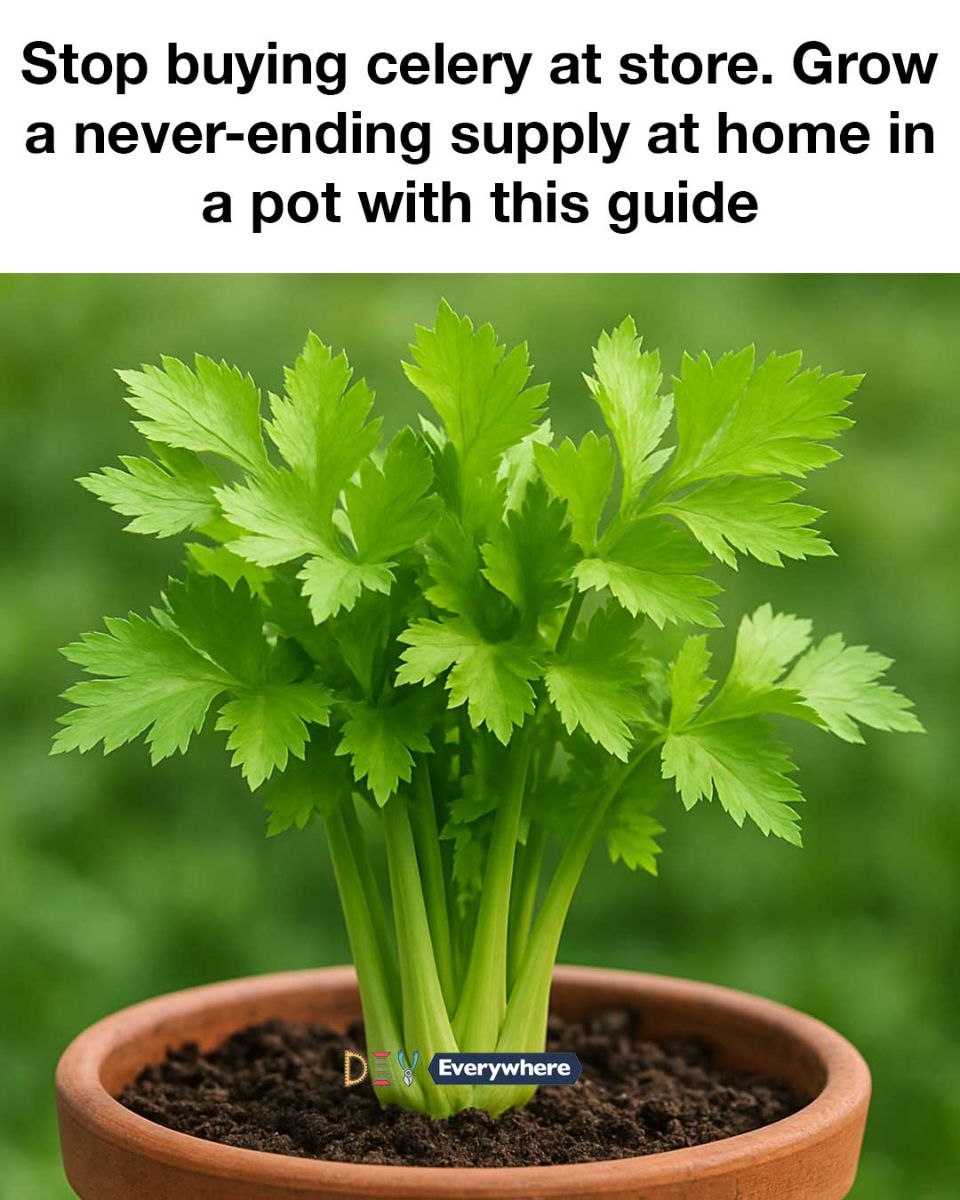Celery is a staple in many kitchens, known for its crisp texture and versatility in a variety of dishes. However, buying celery from the store can often be less than satisfying, with stalks that are either too limp or lacking in flavor. Fortunately, there’s a solution that not only ensures a fresh supply of celery but also adds a touch of greenery to your home: growing your own celery in a pot.
Growing celery at home is not only economical but also incredibly rewarding. With just a few simple steps, you can cultivate a never-ending supply of this nutritious vegetable right in your kitchen or balcony. This guide will walk you through the process, from selecting the right pot to harvesting your homegrown celery, ensuring you have a continuous supply of fresh, flavorful stalks.
1. Why Grow Celery at Home?
Growing celery at home allows you to have control over the quality and freshness of your produce. Store-bought celery can often be treated with chemicals to extend its shelf life, which can affect its taste and nutritional value. By growing it yourself, you can ensure that your celery is organic and free from harmful pesticides.
Moreover, homegrown celery tends to be more flavorful and aromatic compared to its store-bought counterpart. This is because you can harvest it at its peak, ensuring maximum freshness. Additionally, growing celery at home is cost-effective. A single celery plant can produce multiple harvests, saving you money in the long run.
2. Benefits of a Homegrown Celery Supply
Homegrown celery is not only fresher but also more nutritious. Celery is rich in vitamins A, C, and K, as well as potassium and folate. When you grow it yourself, you can ensure that these nutrients are preserved, as you can harvest and consume it immediately.
Another benefit is the environmental impact. By growing your own celery, you reduce the need for plastic packaging and transportation emissions associated with store-bought produce. This makes home gardening a more sustainable choice for the environmentally conscious consumer.
3. Choosing the Right Pot and Soil
When growing celery in a pot, it’s important to choose a container that is at least 12 inches deep and wide. This provides enough space for the roots to grow and the plant to thrive. Ensure the pot has drainage holes to prevent waterlogging, which can lead to root rot.
For soil, use a high-quality potting mix that retains moisture but also drains well. Celery prefers a soil pH between 6.0 and 7.0. You can enhance the soil with organic compost or well-rotted manure to provide essential nutrients for healthy growth.
4. How to Select the Best Celery Stalks for Regrowth
To regrow celery, start by selecting a healthy, fresh stalk from the store. Look for stalks that are firm and vibrant green, with no signs of wilting or browning. The base of the celery, where the stalks converge, should be intact and free from damage.
Once you’ve selected your celery, cut the stalks about 2 inches above the base. This base will be used for regrowth, so handle it carefully to avoid any damage.
5. Step-by-Step Guide to Planting Celery in a Pot
Begin by placing the celery base in a shallow dish of water, with the cut side facing up. Place the dish in a sunny spot and change the water every couple of days. After about a week, you should see new growth emerging from the center.
Once the new growth is about 2 inches tall, it’s time to plant the celery in a pot. Fill your chosen pot with the prepared soil mix, leaving about an inch from the top. Make a small hole in the center and place the celery base in it, covering the roots with soil. Water the plant thoroughly and place it in a location that receives plenty of sunlight.
6. Optimal Watering Techniques for Celery
SEE NEXT PAGE
ADVERTISEMENT

